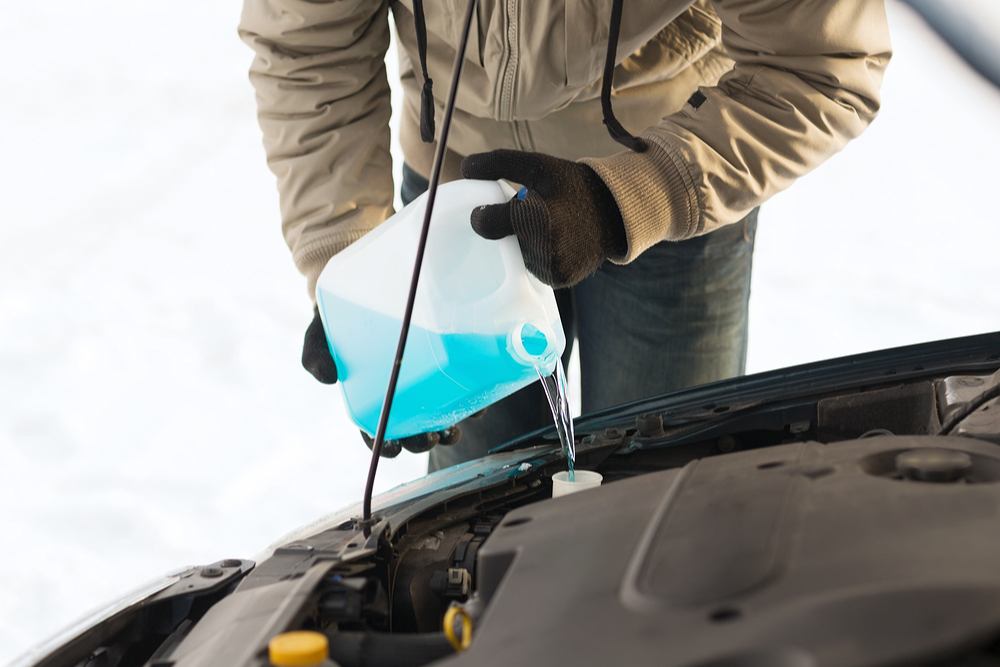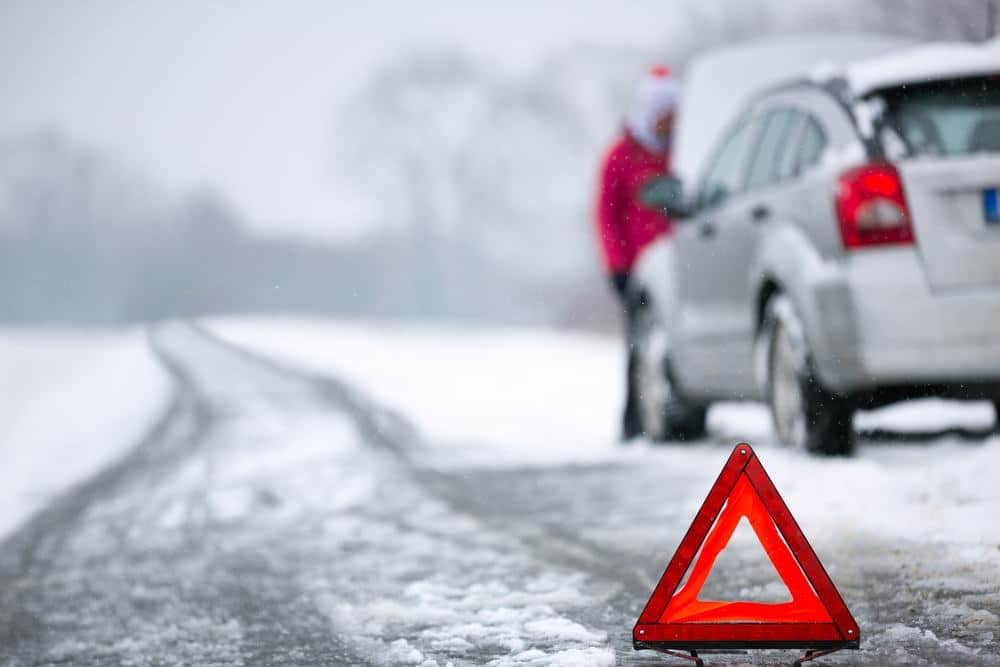Driving during the winter is not always easy. Depending on where you live, you could face minor inconveniences like frosted over windows, or major concerns like slick patches of black ice. Regardless, every driver is going to deal with holiday traffic and longer warm-up times on chilly mornings.
Temperature changes affect major parts of your car, so it’s a good idea to take precautions and ensure that everything is set for cold weather.
These winter driving essentials will keep your vehicle reliable and safe through the colder months.
Inspect Your Tires
Grip and traction is limited by snow or ice, so it’s important to keep your tires in good shape during winter. Correct pressure varies between tires, but it’s usually printed on the sidewall or on a sticker inside the driver’s door. Tire pressure can drop two PSI for every 10 degrees the ambient temperature decreases, so make a habit of checking at every other fuel stop, and consider putting a tire pressure gauge on your holiday wish list.
Tread depth is equally important. The tread digs into loose terrain and channels water away from the contact patch. If it’s too shallow, your chances of spinning out increase. Checking tread depth is quick and easy: get a penny and stick it in the tread, with Abraham Lincoln’s head pointed towards the tire. If you can see the top of his head, the tread is too shallow and your tires need to be replaced.
Most cars come with all-season tires, which aren’t designed to handle more than a light dusting of snow. Tire chains are an easy solution, but if you drive in an area that experiences regular snowfall, you should invest in a set of winter tires. They’re made of soft rubber that grips better in cold temperatures, and have special tread patterns designed to cut through snow – some even have metal studs for driving in extremely icy conditions.
Test Your Battery
Batteries can’t produce as strong of a current when they’re cold, so it’s not uncommon to have trouble starting your car during winter. Corrosion on the battery terminals can impede the flow of electricity, so you should clean or replace them if you spot any. It’s also a good idea to test your battery’s voltage. Use a multimeter or voltmeter to check the voltage level. It should read between 12.40 and 12.75 volts to ensure reliable starting.
The last thing you want to deal with on a frigid day is a car that won’t start, so if you live in a cold climate, you might want to buy a battery warmer. As the name implies, it heats your battery so the electric current can flow better so you can start your car without trouble.
Keep jumper cables nearby so you can get a boost from another car if it’s just that cold.
Check Your Fluids
The fluids in your car are critical to keeping it running, and winter weather affects their performance. If your car’s engine uses regular oil you should have it changed to a lighter weight oil that circulates better when it’s cold. You can also opt for a synthetic oil as well, which will have numerous benefits for your vehicle.
If the coolant in your radiator freezes it can lead to a costly repair bill, so test the coolant concentration and top it off with some fresh antifreeze if needed. It’s also a pain if your windshield washer fluid freezes, so you might need to drain the reservoir and refill it with fluid suited for cold weather.
Keeping your gas tank at least a third full is another good idea. The more fuel in your tank, the longer your car will stay running with the heater blowing if you get stuck.
Take Care of Maintenance
If there’s a repair you’ve been putting off or warning light you’ve been ignoring, get it taken care of before winter hits – you don’t want your car to let you down in the cold.
It may sound counterintuitive, but it’s important to keep your car washed and waxed during winter. It’s more about protecting it from the elements than making it look nice. Road salt can wreak havoc on your car’s body and undercarriage by creating corrosion that’s difficult to repair, and regular cleaning prevents that from happening.
If there’s snow falling, make sure to clean it off your car before you drive. Piled-on snow can fall and be a hazard to other drivers. When you park, always lift up your windshield wipers if you’re expecting snowfall so they’re not buried under powder when you need them.
Emergency Kits
Snowstorms make roads slick and limit your visibility, which increases the likelihood of spins and crashes. Get prepared and pack an emergency kit to keep in your car. Having a first aid kit in your car is a good idea all year round, but especially during winter – who knows when it might come in handy. Road flares or reflective triangles are another must-have.
If your car does end up off the road, they tell other drivers and emergency responders to look out.
A shovel and bag of sand help if your car is stuck. The shovel lets you dig away snow blocking your path, and spreading sand on the ground improves traction if your tires are spinning. Digging through snow is tiring, and if you’re stuck when the sun goes down, it’s outright dangerous. Food like energy bars, bottles of drinking water, and fire starting materials could be key in a dire scenario.
Include a warm change of clothes in your emergency kit too. If you get wet when you’re trudging through snow, backup clothes will get you dry and warm. Foil emergency blankets are great to pack: they’re lightweight, highly visible, and excellent at retaining body heat.
Finally, get a car charger for your mobile device so you don’t risk running out of battery if you need to call for assistance or use navigation. There are car chargers on the market today that are powerful and portable. Also, you might not remember the last time you used a printed map, but having one on hand helps you find your way if your phone does run out of juice.
When the temperatures drop and snow starts to fall, driving becomes all the more challenging. Whether you’re headed home for the holidays, out for a ski weekend, or just across town, follow these winter driving essentials to get where you need to go no matter the weather.
Alex Leanse works at YourMechanic.com. Have a question about your car? Browse through thousands of car help articles, or get free advice from an expert mechanic.
from Automoblog.net http://www.automoblog.net/2016/12/15/5-important-winter-driving-essentials/
via IFTTT
from Tumblr http://peternpalmer.tumblr.com/post/154514347311
via IFTTT




No comments:
Post a Comment